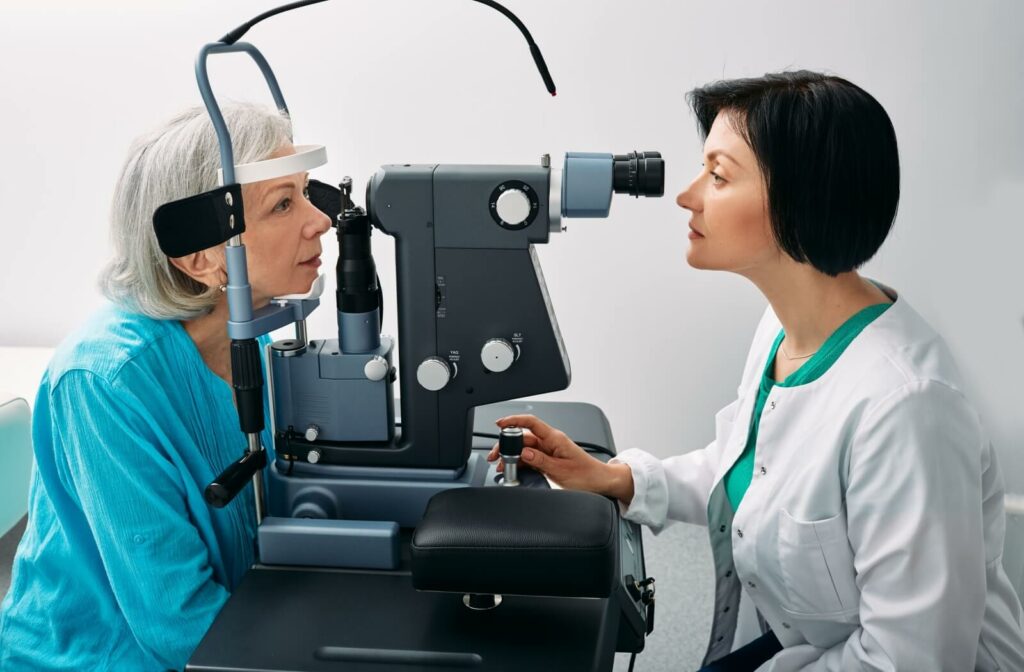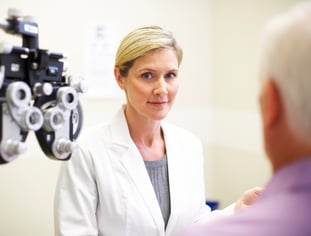Top Reasons to Visit an Optometrist Chino for Your Eye Health
Top Reasons to Visit an Optometrist Chino for Your Eye Health
Blog Article
Discovering the current Technical Developments in Optometry and What They Mean for Optometrists
In the ever-evolving field of optometry, recent technical improvements are reshaping how experts come close to eye treatment. From the precision of Optical Coherence Tomography to the nuanced understandings supplied by AI-driven analysis devices, these technologies are setting brand-new criteria in patient analysis and therapy. Teleoptometry is positioned to redefine access, guaranteeing that competence goes beyond geographical limitations. As these developments penetrate the practice, eye doctors are confronted with the obstacle of accepting these devices to improve individual results. The inquiry remains: exactly how will these technological shifts redefine the duties and obligations within the career?
Developments in Diagnostic Devices
Progressing the area of optometry, technologies in analysis tools have revolutionized the way eye treatment professionals analyze and detect ocular problems and aesthetic disabilities. The past decade has experienced substantial technical improvements, allowing even more detailed and exact analyses.
An additional secret innovation is the intro of sophisticated corneal topography systems, which map the surface curvature of the cornea with accuracy. These tools are particularly valuable for suitable get in touch with lenses and identifying corneal conditions. In addition, digital retinal imaging has changed typical ophthalmoscopy, supplying in-depth, breathtaking views of the retina that assist in thorough aesthetic exams.
The development of wavefront aberrometry has additionally been critical, making it possible for the evaluation of refractive errors with unmatched precision (Eye Doctor). This innovation helps in personalizing corrective lenses and boosting surgical outcomes for refractive surgical procedures. Collectively, these analysis improvements equip eye doctors to supply premium person treatment, guaranteeing early intervention and tailored treatment techniques, inevitably boosting aesthetic health results
AI in Patient Monitoring
Building on the foundation of sophisticated diagnostic devices, the consolidation of man-made knowledge (AI) in patient monitoring stands for a transformative leap for optometry. AI systems are progressively utilized to boost effectiveness, accuracy, and customization in individual treatment.
Moreover, AI-driven systems promote structured client communications and administrative processes. Automated organizing, virtual appointments, and individualized follow-up plans not only enhance individual satisfaction yet additionally optimize time monitoring for practitioners. These systems can triage individuals based on the necessity of their conditions, making sure that those in vital demand get timely attention.
In addition, AI boosts decision-making by supplying eye doctors with evidence-based recommendations and therapy paths. By integrating information from electronic health documents, AI tools offer insights that inform clinical decisions, reducing the threat of mistakes and enhancing client results. As AI proceeds to advance, its role in individual management will likely expand, improving the landscape of optometric treatment.
Advances in Retinal Imaging
In the realm of optometry, retinal imaging has seen exceptional technical developments that are improving analysis capacities and person care. Advancements such as Optical Coherence Tomography (OCT) and fundus digital photography have actually changed just how optometrists picture and evaluate the retina.
Enhanced imaging methods like OCT angiography are additional refining diagnostic accuracy. Eye Doctor Optometrist. Such innovations assist in the recognition of minute retinal changes that could indicate illness development.
Moreover, developments in expert system are boosting retinal imaging by making it possible for automated evaluation of huge datasets. These systems help eye doctors in recognizing patterns indicative of pathology, consequently improving diagnostic accuracy and performance. Collectively, these technologies are transforming retinal imaging into a cornerstone of modern eye care, improving end results and increasing therapeutic opportunities.
Teleoptometry's Expanding Duty
Teleoptometry is increasingly becoming an essential part of eye care, driven by innovations in data and analysis devices. As optometry welcomes digital makeover, teleoptometry facilitates remote examinations, permitting eye doctors to extend their solutions beyond typical borders. This is particularly advantageous in rural and underserved areas where access to specialized eye treatment is frequently click here now restricted. By leveraging high-resolution video conferencing and advanced retinal imaging, eye doctors can perform detailed eye tests from afar, guaranteeing timely medical diagnosis and treatment.
The combination of man-made intelligence (AI) further improves teleoptometry, allowing the evaluation of aesthetic data and aiding in the detection of ocular problems such as glaucoma and diabetic retinopathy. AI-powered algorithms can quickly interpret complex imaging data, offering optometrists with important understandings that reinforce professional decision-making.
Furthermore, teleoptometry supports connection of care via smooth integration with electronic health documents (EHRs), allowing optometrists to preserve extensive person histories. This makes sure that clients receive consistent and individualized care also when seeking advice from various experts.
In spite of these advantages, obstacles remain, consisting of ensuring data safety and taking care of person expectations. However, teleoptometry represents a substantial stride in the direction of more available, efficient, and patient-centered eye care. As technology progresses, its duty is poised to expand even more.

Future Trends in Eye Treatment
A myriad of innovative fads is readied to improve the future of eye care, driven by technological developments and the progressing demands of individuals. One significant fad is the combination of expert system (AI) in diagnostics, which guarantees link to boost the accuracy and performance of eye examinations. AI algorithms can analyze huge amounts of information from retinal visit photos, potentially identifying conditions like diabetic person retinopathy and glaucoma earlier than traditional techniques.
Moreover, personalized medicine is gaining traction in optometry, with hereditary screening informing customized therapy plans. This method intends to enhance patient end results by customizing interventions to specific hereditary profiles. Wearable innovation, such as clever contact lenses, is additionally imminent, providing real-time tracking of intraocular stress or sugar levels, therefore giving constant insights right into systemic and eye wellness.
The adoption of increased truth (AR) and digital fact (VIRTUAL REALITY) in training and client education is another arising pattern. These technologies offer immersive experiences that can boost understanding and skills both for optometrists and people. As these trends progress, optometrists have to stay abreast of technological developments to provide advanced treatment, ensuring enhanced patient end results and satisfaction in the dynamic landscape of eye care.
Conclusion

Jointly, these analysis advancements empower optometrists to supply premium individual care, guaranteeing early intervention and customized therapy strategies, eventually improving aesthetic health and wellness outcomes.

As these technologies proceed to evolve, optometrists must adapt and incorporate them right into method, inevitably maximizing workflow performance and elevating the criterion of eye care supplied to patients.
Report this page